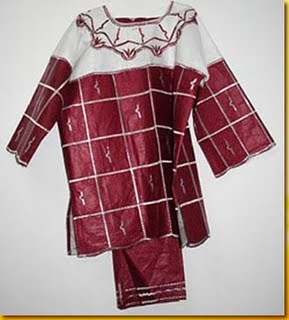Reactive Dyes
The following factors explain why the usage of reactive dyes are the best solution for toweling.
|
BRIGHT SHADES
The reactive dyes are the brightest dyes available for the cellulose fibres and have a full range of shades.
GOOD FASTNESS PROPERTIES
Color Fastness is the resistance of a material to change in any of its color characteristics, the resistance to transfer its colorant to adjacent materials, or both, as a result of the exposure of the material to any environment that might be encountered during the processing, testing, storage, or use of the material by the consumer.
WASH FASTNESS
Towels dyed with reactive dyes have very good wash fastness properties. The wash fastness rating is about 4-5 per AATTCC standards.
LIGHT FASTNESS
Towels dyed with reactive dyes have very good light fastness. The light fastness rating being about 6 per AATTCC standards. These dyes have a very stable electron arrangement and provide very good resistance to the degrading effect of the UV component of sunlight. There are, however, some reactive dyes with only fair light fastness
BLEACHING FASTNESS
The reactive dyes are stable to peroxide bleaching and so are suitable for towels which might be used in the Bathroom around cosmetics. Strong reducing agents and chlorine, however, destroy the chromogens.
EASY APPLICATION
Reactive dyes offer a great flexibility in application methods with a wide choice of equipment and process sequences and so they have become very popular with most all modern mills. These are applied through exhaust and continuous systems both very comfortably.
MODERATE COST
Reactive dyes as compared to vats are of lesser costs considering the fastness properties of both. The dyeing process involved in vat dyeing is also costly which involves certain steps like reduction and oxidation. On the other hand reactive dyeing is free from these steps.
ECO-FRIENDLINESS
Many consumers also appreciate the eco-friendliness of fiber reactive dyes. Some companies process the dyes with natural ingredients and materials, focusing on creating a product with a minimum of harmful waste. Since the dyes are colorfast, they will not bleed into wash water, leading to a reduction in dye-laden water runoff, which can be harmful for the environment.
How to Select Proper Reactive Dye For Dyeing?
Properly Dyestuff Selection for Reactive Dyeing:Reactive Dyestuff Selection:
The selection of reactive dyestuff for a tri-chromatic or bi-chromatic combination plays a very important role in the performance and reproducibility of reactive dyeing in textile processing. There are some crucial Points that should be in your head while you are selecting the reactive dyes for dyeing fabric.Solubility Characteristics of Reactive Dye:
Solubility of individual dyestuff in g/l without salt (straight) and with salt should be checked importantly to dye selection for a combination shade. In a tri-chromatic combination, all the reactive dyes should have almost similar solubility characterized. The reactive dyestuff that gets affected by the presence of salt would, a) produce tonally different shade,b) produce poor rubbing and wash fast dyeing
c) batch to batch difference in depth and tone would result.
You must consider the following things while reactive dyeing:
Using of Primary Colors:
One should try to use the Basic Colors such as Red, G.Yellow and Blue. The secondary colors should be avoided as far as possible.The Red’s and Blue’s varies with shade and requirement of fastness properties.
Dyes with similar Exhaustion and Fixation values:
The Reactive dyeing takes place in three steps. viz.,1. Exhaustion
2. Fixation
3. Wash off
Normally two types of exhaustion take place while dyeing. These are primary and secondary exhaustion.Primary Exhaustion is the amount of dyestuff migrated on the substrate in the presence of salt. While secondary exhaustion is the total amount of dye migrated on the substrate in the presence of salt and alkali.
While selecting a combination, one has to ensure that the Percentage Exhaustion (PE) and The Percentage Fixation (PF) of dyes should be similar.
In the case of
Reactive ME Dyes PE is 60 to 70%
Reactive HE dyes PE is 70 to 80%
Reactive VS dyes PE is 40 to 50%
If is always preferable to use dyes with PE about 60 to 70%, i.e., ME dyes. Patchy dyeing may occur if peoper care is not taken while using dyes with higher PE, or lower PE.
Dyes With Similar Affinity:
Generally the dyes are classified as Low, Medium, High and Very High affinity dyes.For Exhaust dyeing, High and very high affinity dyes and preferred. Where as low affinity dyes are used in continuous dyeing.
If you follow the above steps you will be able to properly select reactive dye.
How to Dye Cotton Fabric With Reactive Dyes?
Cotton fabric after pre-treatments e.g desizing, scouring & bleaching can be dyed using the following recipe:Reactive Dyes————————–X%
Sequestering agent—————–0.5 G/L
Wetting agent———————–0.1-0.5 G/L
Ant-creasing agent——————0.5-2.0G/L
Salt————————————10-80 G/L
Soda———————————–2-20G/L
Temperature ————————-60-80 Degree
Dyeing time————————- 60 minute.
When the cotton fabric dyeing is complete, drain-off the dye liquor. Wash the fabric with hot water at 40 degree c & hen with cold water. Again wash the dyed fabric with 1-3 G/L soap or detergent at 60 degree – 80 degree c for at least 10 minutes. Then drain –off the washing liquor. Again wash the dyed fabric with hot water & then with cold water.
Finally, take out the dyed fabrics from the machine, hydroextuct the fabric and dry the fabric passing through stenter m/c any other drying machine.



Post a Comment